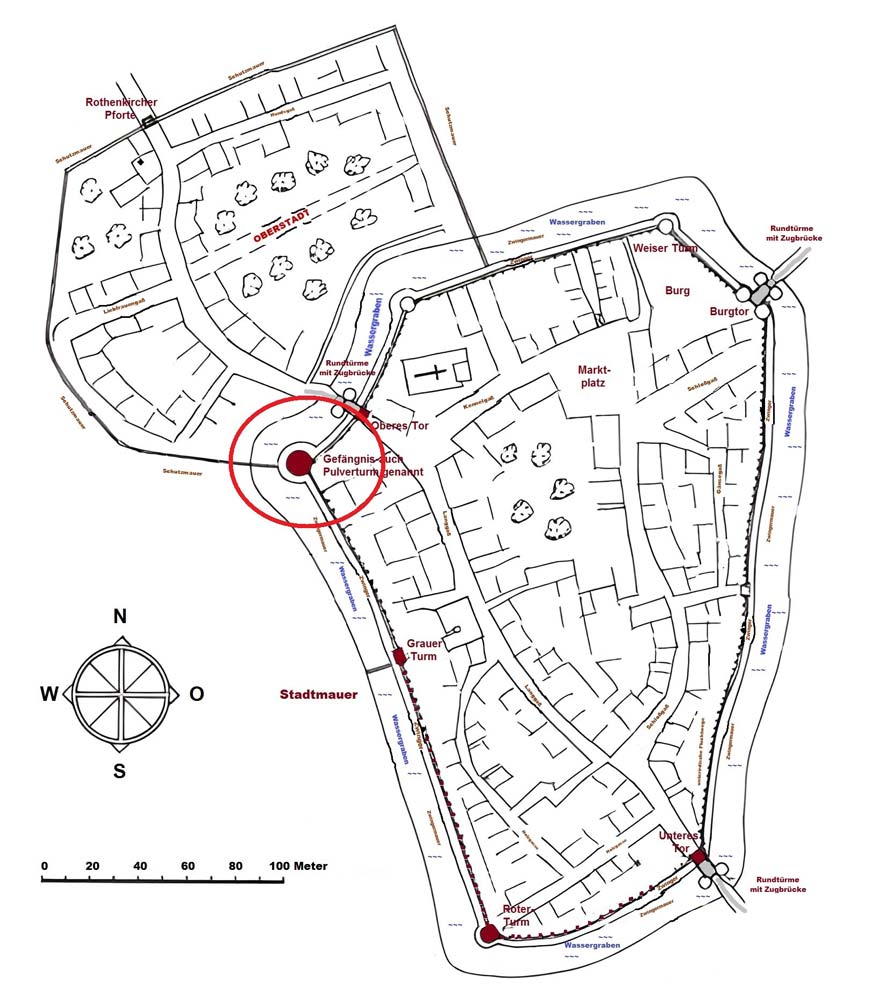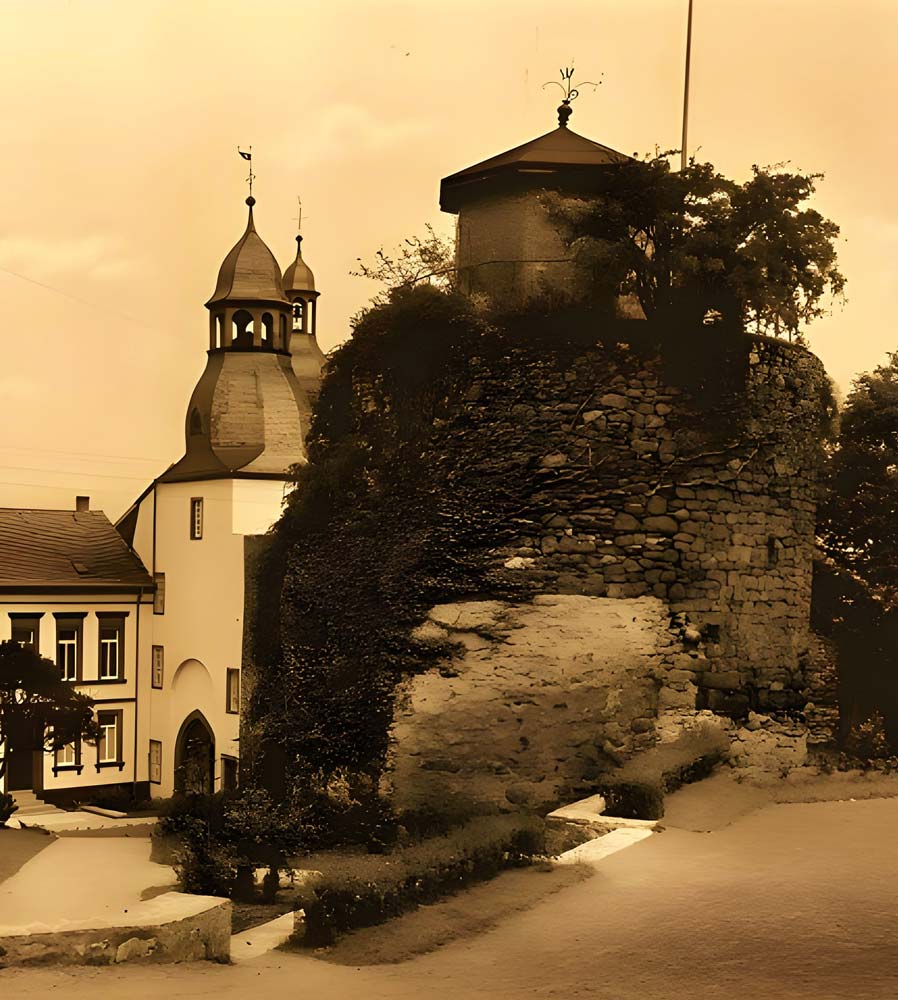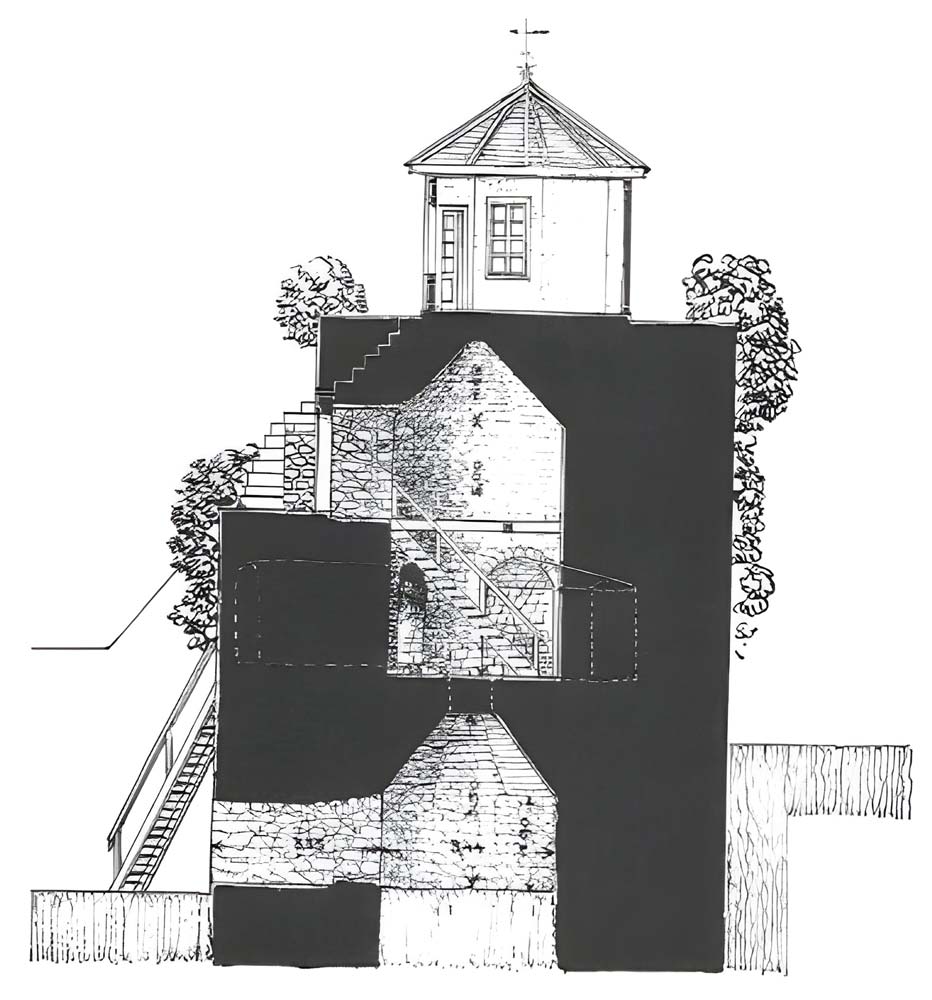Gefägni Tower
Change of function
The most important building between the Grey Tower [Standort 08] and the Upper Gate [Standort 19] was the former prison tower. This is where the western section of the city wall meets the northern section coming from the Upper Gate at an obtuse angle.
The preserved bastion has a former dungeon with a diameter of 3.30 meters. The ceiling is vaulted in a funnel shape and the only entrance is a round opening in the middle, which leads to the room above.
However, the name “Powder Tower” refers to a completely different function of the bastion as a storage facility for gunpowder. Another name was added in the 20th century: Apothekerturm.
This is because it bordered the garden belonging to the former court pharmacy [Standort 12]. Photos from the 1920s therefore show a garden shed on the tower. It was also included in the cross-sectional drawing of the bastion at the time.



Change of function
The most important building between the Grey Tower [Standort 08] and the Upper Gate [Standort 19] was the former prison tower. This is where the western section of the city wall meets the northern section coming from the Upper Gate at an obtuse angle.
The preserved bastion has a former dungeon with a diameter of 3.30 meters. The ceiling is vaulted in a funnel shape and the only entrance is a round opening in the middle, which leads to the room above.
However, the name “Powder Tower” refers to a completely different function of the bastion as a storage facility for gunpowder. Another name was added in the 20th century: Apothekerturm.
This is because it bordered the garden belonging to the former court pharmacy [Standort 12]. Photos from the 1920s therefore show a garden shed on the tower. It was also included in the cross-sectional drawing of the bastion at the time.
An impressive ruin has been preserved. It has an outer diameter of 10 m and the walls are 3.35 m thick.
There is no information about the former height, but it can be assumed to be at least 20 m in view of the good panoramic view over the terrain in front.
But above all: the highest point of the city wall was specially fortified.

Medieval penal system
Being sentenced to the “tower” was a not uncommon fatal punishment in the Middle Ages. It was often carried out in a specially equipped basement of a city tower: the delinquent was “roped down” into a dungeon with a winch, where he “served” his sentence in complete darkness. The inevitable loss of a sense of time, the cold and damp as well as the hygienic inadequacies were not considered inappropriate prison conditions in medieval times.
Under certain circumstances, this could be compounded by inadequate nutrition. The delinquent usually had to bear the costs of his imprisonment himself, but was often unable to do so. The city then had to pay for this. However, if the city also had no financial means, the “bread and water” rations might not be provided for longer.
The Kirchheimboland prison tower is therefore a conspicuous historical site of the medieval penal system, which was guided by the idea of “negative general prevention”, i.e. the deterrence of the general public through drastic punishment of offenders up to and including the death sentence. For example, the Holy Roman Empire’s embarrassing Neck Court Order of 1532 stipulated that anyone who broke into a house or was caught stealing for the third time forfeited their life and the man was to be punished by hanging and the woman by water from life to death.
These sentences were carried out by the “Hals- und Nachrichter” – in Kirchheimbolanden until the 1790s. Punishment was intended to cause “torment” (Middle High German: Marter, agony, pain) and deter through its public nature.